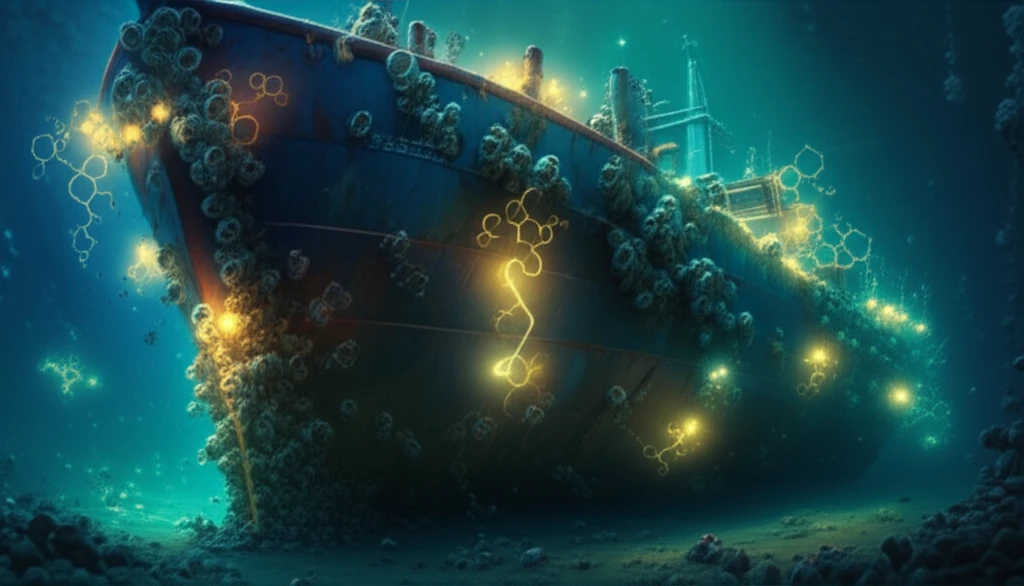
Unlocking the Secrets of Barnacle Settlement: How Serotonin and Dopamine Could Revolutionize Marine Biofouling Strategies
"Dive into the groundbreaking research exploring the surprising roles of serotonin and dopamine in barnacle settlement, and how these findings could lead to eco-friendly solutions for combating marine biofouling."
Marine biofouling, the accumulation of organisms on submerged surfaces, poses a significant challenge to maritime industries. Barnacles, with their tenacious grip, are major contributors to this problem, increasing drag on ships, damaging infrastructure, and causing economic losses. Traditional antifouling methods often rely on toxic chemicals, raising environmental concerns and urging researchers to explore more sustainable solutions.
Recent research has shed light on the complex biological processes governing barnacle settlement, particularly the role of neurotransmitters like serotonin and dopamine. These chemicals, known for their roles in regulating mood and behavior in humans, also appear to play a crucial role in the larval stages of barnacles as they transition from free-swimming cyprids to settled adults.
This article dives into a fascinating study investigating the effects of serotonin, dopamine, and related substances on the settlement of Balanus amphitrite, a common barnacle species. By understanding the intricate signaling pathways involved in this process, scientists hope to unlock new, environmentally friendly strategies for preventing biofouling and protecting marine ecosystems.
The Neurochemical Symphony of Barnacle Settlement: Serotonin as a Key Inhibitor

The study, conducted by researchers at the University of Genova and the CNR Institute of Marine Sciences, focused on the cyprid larvae of Balanus amphitrite. Cyprids are the final larval stage of barnacles, equipped with the ability to explore surfaces, attach, and metamorphose into adult barnacles. The researchers investigated how exposure to serotonin, dopamine, and various related compounds influenced cyprid settlement rates.
- Serotonin's Inhibitory Role: The study revealed that serotonin, contrary to some expectations, acts as a settlement inhibitor in Balanus amphitrite cyprids. This finding challenges previous assumptions and opens new avenues for antifouling research.
- Dopamine's Promoting Effect: Dopamine, on the other hand, appeared to promote settlement at lower concentrations, suggesting a complex interplay between these two neurotransmitters.
- The Impact of Selective Drugs: Further experiments using drugs that selectively alter serotonin and dopamine levels provided additional insights. For instance, fluoxetine (a serotonin reuptake inhibitor) and d-fenfluramine (a serotonin releaser) consistently inhibited settlement, reinforcing serotonin's role as an inhibitor.
- 8-OH-DPAT's Potent Inhibition: The 5-HT1A receptor agonist 8-OH-DPAT, was found to potently inhibit settlement.
- Pargyline's Effect: The monoamine oxidase inhibitor, pargyline showed significant effect at 48 and 72 hours, from 1 to 10 µg ml-1 underlines a significative or highly significative inhibition.
Future Directions: Towards Eco-Friendly Antifouling Solutions
The research highlights the potential of targeting neurochemical signaling pathways for antifouling applications. Future studies could focus on identifying specific serotonin receptors involved in barnacle settlement and developing compounds that selectively block these receptors without harming other marine organisms. By mimicking natural antifouling mechanisms, scientists can pave the way for a new generation of eco-friendly solutions that protect our oceans and support sustainable maritime practices.
